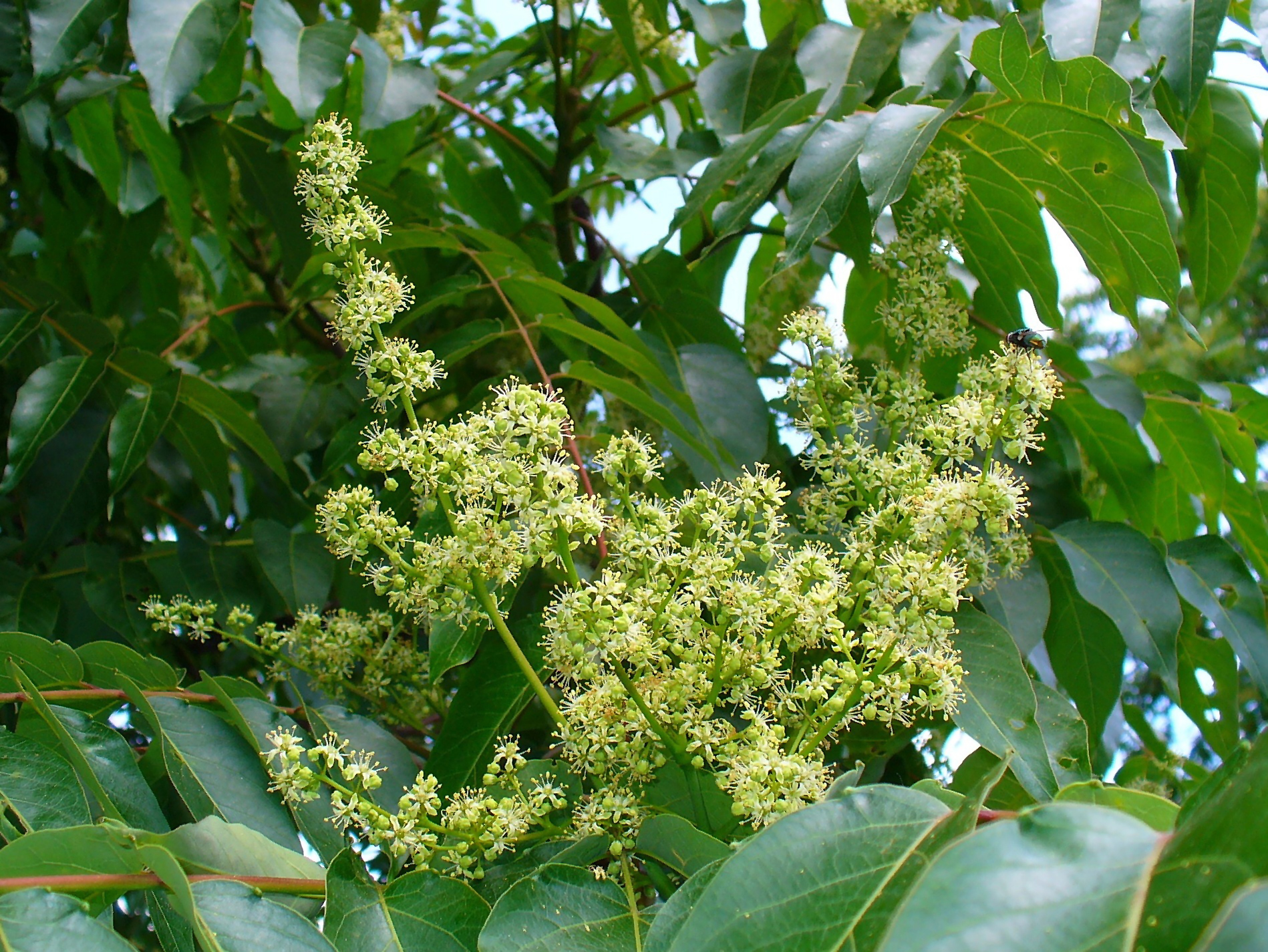Ailanthus on:
[Wikipedia]
[Google]
[Amazon]
''Ailanthus'' (; derived from ''ailanto,'' an Ambonese word probably meaning "tree of the gods" or "tree of heaven") is a genus of
 The number of living species is disputed, with some authorities accepting up to ten species, while others accept six or fewer. Species include:
*''
The number of living species is disputed, with some authorities accepting up to ten species, while others accept six or fewer. Species include:
*''
Germplasm Resources Information Network: ''Ailanthus''
{{Authority control Sapindales genera
tree
In botany, a tree is a perennial plant with an elongated stem, or trunk, usually supporting branches and leaves. In some usages, the definition of a tree may be narrower, e.g., including only woody plants with secondary growth, only ...
s belonging to the family Simaroubaceae, in the order Sapindales (formerly Rutales or Geraniales). The genus is native from east Asia south to northern Australasia
Australasia is a subregion of Oceania, comprising Australia, New Zealand (overlapping with Polynesia), and sometimes including New Guinea and surrounding islands (overlapping with Melanesia). The term is used in a number of different context ...
. One species, the tree of heaven (''Ailanthus altissima'') is considered a weed in some parts of the world.
Selected species
Ailanthus altissima
''Ailanthus altissima'' ( ), commonly known as tree of heaven or ailanthus tree, is a deciduous tree in the quassia family. It is native to northeast and central China, and Taiwan. Unlike other members of the genus ''Ailanthus'', it is found ...
'' (tree of heaven, syn. '' A. vilmoriniana'' ) – northern and central mainland China
"Mainland China", also referred to as "the Chinese mainland", is a Geopolitics, geopolitical term defined as the territory under direct administration of the People's Republic of China (PRC) in the aftermath of the Chinese Civil War. In addit ...
, Taiwan. Invasive in North America, Europe, Britain, and Australia. Serves as central metaphor in '' A Tree Grows in Brooklyn''.
*'' Ailanthus excelsa'' – India and Sri Lanka
*'' Ailanthus fordii'' – China
*'' Ailanthus integrifolia'' – New Guinea
New Guinea (; Hiri Motu: ''Niu Gini''; , fossilized , also known as Papua or historically ) is the List of islands by area, world's second-largest island, with an area of . Located in Melanesia in the southwestern Pacific Ocean, the island is ...
and Queensland, Australia
*'' Ailanthus triphysa'' (white siris syn. ''A. malabarica'') – India, South-east Asia and Australia
*'' Ailanthus vietnamensis'' – Vietnam
There is a good fossil record of ''Ailanthus'' with many species names based on their geographic occurrence, but almost all of these have very similar morphology and have been grouped as a single species among the three species recognized:
*'' Ailanthus tardensis'' – from a single locality in Hungary
*'' Ailanthus confucii'' – Tertiary period, Europe, Asia, and North America
*'' Ailanthus gigas'' – from a single locality in Slovenia
*'' Ailanthus pythii'' – known from the Miocene
The Miocene ( ) is the first epoch (geology), geological epoch of the Neogene Period and extends from about (Ma). The Miocene was named by Scottish geologist Charles Lyell; the name comes from the Greek words (', "less") and (', "new") and mea ...
of Iceland, Styria
Styria ( ; ; ; ) is an Austrian Federal states of Austria, state in the southeast of the country. With an area of approximately , Styria is Austria's second largest state, after Lower Austria. It is bordered to the south by Slovenia, and cloc ...
in Austria and the Gavdos island in Greece
*'' Ailanthus kurzii'' – endemic to the Andaman Islands, India
*'' Ailanthus maximus'' – known from the latest Paleocene
The Paleocene ( ), or Palaeocene, is a geological epoch (geology), epoch that lasted from about 66 to 56 mya (unit), million years ago (mya). It is the first epoch of the Paleogene Period (geology), Period in the modern Cenozoic Era (geology), ...
to late Oligocene
The Oligocene ( ) is a geologic epoch (geology), epoch of the Paleogene Geologic time scale, Period that extends from about 33.9 million to 23 million years before the present ( to ). As with other older geologic periods, the rock beds that defin ...
in the Tibetan Plateau
Ailanthus silk moth
A silk spinning moth, the ailanthus silkmoth ('' Samia cynthia''), lives on ''Ailanthus'' leaves, and yields a silk more durable and cheaper than mulberry silk, but inferior to it in fineness and gloss. This moth has been introduced to the eastern United States and is common near many towns; it is about 12 cm across, with angulated wings, and in color olive brown, with white markings. OtherLepidoptera
Lepidoptera ( ) or lepidopterans is an order (biology), order of winged insects which includes butterflies and moths. About 180,000 species of the Lepidoptera have been described, representing 10% of the total described species of living organ ...
whose larva
A larva (; : larvae ) is a distinct juvenile form many animals undergo before metamorphosis into their next life stage. Animals with indirect development such as insects, some arachnids, amphibians, or cnidarians typically have a larval phase ...
e feed on ''Ailanthus'' include '' Endoclita malabaricus'', and ''Atteva aurea'' (commonly known as the Ailanthus webworm moth).
See also
* Spotted lanternflyReferences
*Germplasm Resources Information Network: ''Ailanthus''
{{Authority control Sapindales genera